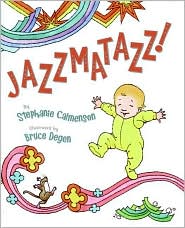 Early Literacy Aside--Explain: Singing songs is one good way for children to become aware of the different sounds that make up words. We call this phonological awareness. Singng helps them get a feel for the rhythm of language and how words are divided into syllables because there is a different note for each syllable. This will help them sound out words when they learn to read.
Submitted by Cindy Christin, Bozeman (MT) Public Library
Early Literacy Aside--Explain: Singing songs is one good way for children to become aware of the different sounds that make up words. We call this phonological awareness. Singng helps them get a feel for the rhythm of language and how words are divided into syllables because there is a different note for each syllable. This will help them sound out words when they learn to read.
Submitted by Cindy Christin, Bozeman (MT) Public Library
What Shall We Do With the Boo-Hoo Baby? by Cressida Cowell
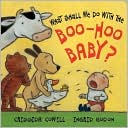
Submitted by Cindy Thompson, Roanoke City (VA) Public Library
Mortimer by Robert Munsch
Mortimer's song is repeated:Clang, clang, rattle-bing-bang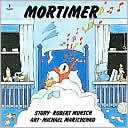
Submitted by Barbara Slough, Glasgow Library, Rockbridge Regional Library (VA)
Pig's Picnic by Keiko Kasza
 Read book Pig's Picnic by Keiko Kasza. Retell the story using props. Have the children retell the story as you maneuver the props.Early Literacy Aside--Example: Using props is one way to help your child remember the story as they try to retell it. When they can retell a story, it helps their understanding.
Read book Pig's Picnic by Keiko Kasza. Retell the story using props. Have the children retell the story as you maneuver the props.Early Literacy Aside--Example: Using props is one way to help your child remember the story as they try to retell it. When they can retell a story, it helps their understanding.
At the end of storytime hold up the handout of Pig's Picnic (below) and demonstrate how you have cut out the pieces so that the children can retell the story. Early Literacy Aside--Empower: You can strength your children's narrative skills, the ability to tell stories, by taking home this storytime handout, having your children cut out the pictures and retell the story. As they retell the story they may add ideas of their own! pigs-picnic-hand-out.doc Submitted by Laura Mikowski, Hillsboro (OR) Public Libraries
Night in the Country by Cynthia Rylant
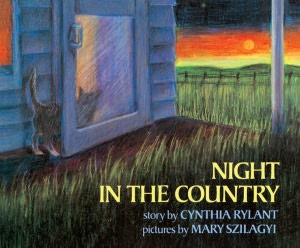
Submitted by Sharon Lindsay, Rockbridge Branch, Bath County (VA) Public Library
Whose House Is This? by Charles Reasoner
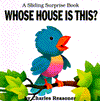 Early Literacy Aside--Explain: There are many ways we can help children enjoy books as we share books together. Children who have positive experiences around books and reading are more likely to stick with learning to read even when it is difficult. I'll be pointing out some ways to share books to make it enjoyable.
As you read the book have children repeat the phrase, "I do. I'm a . . . " with each animal.
Early Literacy Aside--Example: Having the children participate by guessing the animals and responding when the animal appears helps them enjoy the book. This helps support their print motivation.
Early Literacy Aside--Explain: There are many ways we can help children enjoy books as we share books together. Children who have positive experiences around books and reading are more likely to stick with learning to read even when it is difficult. I'll be pointing out some ways to share books to make it enjoyable.
As you read the book have children repeat the phrase, "I do. I'm a . . . " with each animal.
Early Literacy Aside--Example: Having the children participate by guessing the animals and responding when the animal appears helps them enjoy the book. This helps support their print motivation.
Submitted by Tara Smith, Roanoke County (VA) Public Library
Children's names or any words
Early Literacy Aside:--Explain: Separating a word into sound parts is called segmentation. Playing with words this way with your children now will help your children later when they learn to break words into syllables to decode words. Clap childen's names or choose words with different numbers of syllables. Early Literacy Aside--Example: Clapping or tapping helps children hear parts of words which will make it easier for them to sound out words when they learn to read. [for 3 - 5's you can use rhythm sticks]
Submitted by Di Gagnier, Roanoke County (VA) Public Library
Piggy and Dad Go Fishing by David Martin
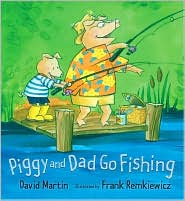
Very Busy Spider by Eric Carle
Read the book The Very Busy Spider by Eric Carle. Encourage adults and children to make the sounds of the animals.Early Literacy Aside--Example: Having your child hear and make the sounds of the animals in this story is one enjoyable way to help develop phonological awareness, to eventually be able to hear the smaller sounds in words. Submitted by Nancy Gattoni, Roanoke County (VA) Public Library
Harry and the Terrible Whatzit by Dick Gackenbach
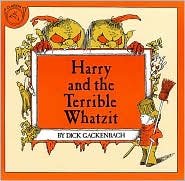
Pete's a Pizza by William Steig
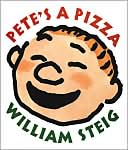
Submitted by Linda White, Washington County (VA) Public Library
Pete's a Pizza by William Steig
Aside: Now I am going to read to you this wonderful book Pete's a Pizza by William Steig. I especially like this story because it introduces narrative skills, which is the ability to retell a story.Read the story. Aside: You can use things from all around the house to tell a story, just as they used things from around the house in this story. Having your child retell stories helps to develop your child's own narrative skills for later life while at the same time increaseing his memory and imagination and love for books. Submitted by Miss Yolanda, Washington County (VA) Public Library
Tacky the Penguin by Helen Lester

Submitted by David Banker, Radford (VA) Public Library
Old MacDonald Had a Farm Song
 Early Literacy Aside--Explain: Songs are a great way to incorporate the early literacy skill, phonological awareness. Hearing and learning animal sounds helps your children hear the smaller sounds in words and singing emphasizes different syllables. This helps your children later to sound out words.
Submitted by Wendy B. Rancier, Roanoke County (VA) Public Library
Early Literacy Aside--Explain: Songs are a great way to incorporate the early literacy skill, phonological awareness. Hearing and learning animal sounds helps your children hear the smaller sounds in words and singing emphasizes different syllables. This helps your children later to sound out words.
Submitted by Wendy B. Rancier, Roanoke County (VA) Public Library
Maybe a Bear Ate It by Robie Harris
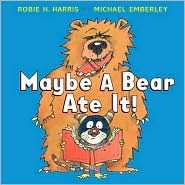
Submitted by Dawn Cheney, Glenvar Branch, Roanoke County (VA) Public Library
Old MacDonald Has a Farm Song
Early Literacy Aside--Explain: Researchers have found that one of the early literacy skills is phonological awareness. This is the ability to hear and play with the smaller sounds in words, like rhyming, playing with syllables or parts of words, and hearing beginning sounds of words. The beginning of this skills starts with children hearing and saying the sounds of animals.Sometime durng storytime sing "Old MacDonald" with the children, including several animals--cow, pig, sheep, chicken, duck, etc. Early Literacy Aside--Example: Making the sounds of animals contributes to phonological awareness and hearing sounds in words. Early Literacy Aside--Empower: Take advantage of opportunities to sing and say the sounds of animals with your children. It's fun and it also helps them hear the smaller sounds in words.
Submitted by Kimberly Burnette-Dean, Roanoke County (VA) Public Library
Snap! by Marcia Vaughan
 Read the book Snap! by Marcia Vaughan.Early Literacy Aside--Example: This book lends itself to retelling events which helps your child understand the story. Encourage your child with questons that leave room for them to describe what they hear or see. I used questions like, "What did Joey do when his Mom fell asleep?" and "Who did he meet?"
Early Literacy Aside--Empower: The ability to retell a story is an important skill for children to have in order to understand what they are reading. Predicting what happens next and acting it out, or as it's usually called, pretend playing, is a fun way to retell a story and to gain background knowldge along the way.
Read the book Snap! by Marcia Vaughan.Early Literacy Aside--Example: This book lends itself to retelling events which helps your child understand the story. Encourage your child with questons that leave room for them to describe what they hear or see. I used questions like, "What did Joey do when his Mom fell asleep?" and "Who did he meet?"
Early Literacy Aside--Empower: The ability to retell a story is an important skill for children to have in order to understand what they are reading. Predicting what happens next and acting it out, or as it's usually called, pretend playing, is a fun way to retell a story and to gain background knowldge along the way.
Submitted by Donna Hackman, Bedford (VA) Public Library and Justin Azevedo, Sacramento (CA) Public Library
The Aminal by Lorna Balian
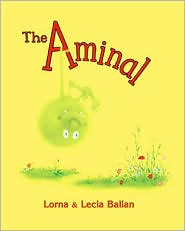
Submitted by Carolyn B. Morehead, Big Island Library, Bedford (VA) Public Library
Blue Goose by Nancy Tafuri
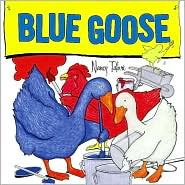
Jazzmatazz! by Stephanie Calmenson
